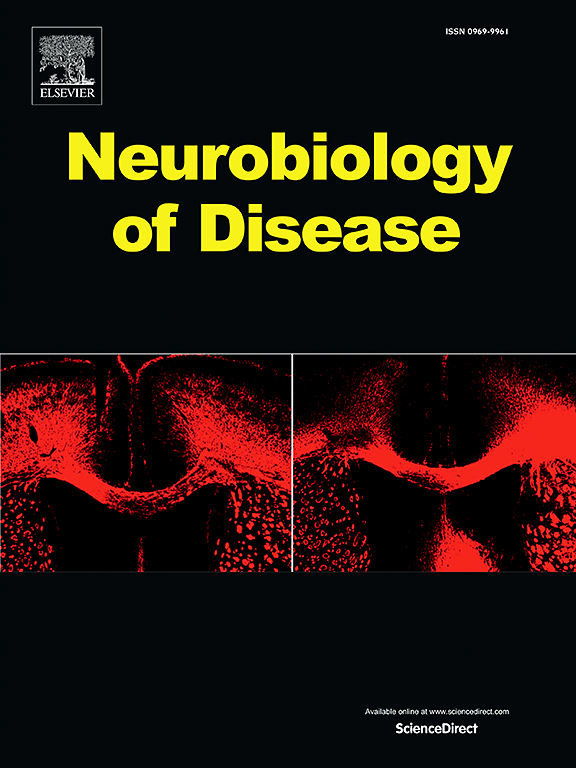脂肪酸结合蛋白及其在焦虑和情绪障碍中的作用
IF 5.6
2区 医学
Q1 NEUROSCIENCES
引用次数: 0
摘要
焦虑和情绪障碍是最普遍的神经精神疾病。然而,目前的药物治疗往往有许多不良的副作用。越来越多的证据表明,脂质信号通路的调节——特别是那些涉及内源性大麻素(eCB)系统的信号通路,可能为治疗焦虑和抑郁提供有希望的新靶点。多不饱和脂肪酸(PUFA)及其代谢衍生物,包括eCB配体,因其在神经精神疾病机制中的作用而引起了极大的关注。脂肪酸结合蛋白(FABP)促进了这些脂质的细胞内运输,而脂肪酸结合蛋白越来越被认为是脂质信号传导的关键调节因子。越来越多的证据表明,FABPs可能通过介导PUFAs和eCB配体的信号通路影响神经精神疾病的发展。在这篇综述中,我们研究了FABPs在两大类神经精神疾病——焦虑障碍和临床抑郁中的作用。我们首先研究了FABPs影响这些疾病的几种神经病理生理机制,重点研究了它们作为脂质伴侣的作用。这些机制包括eCB配体以及油基乙醇酰胺和棕榈基乙醇酰胺的贩运;通过PUFA转运和PPAR激活调节炎症反应;调节多聚脂肪酸可用性以支持神经发生;对应激相关通路的影响,包括NMDA受体激活和下丘脑-垂体-肾上腺轴;以及促进多巴胺受体的运输和定位。接下来,我们讨论将FABP功能与焦虑和抑郁相关行为联系起来的临床前证据。最后,我们提出药理学靶向fabp介导的途径具有相当大的潜力,作为解决与情绪和焦虑障碍相关症状的新治疗策略。本文章由计算机程序翻译,如有差异,请以英文原文为准。

Fatty acid binding proteins and their involvement in anxiety and mood disorders
Anxiety and mood disorders represent the most prevalent neuropsychiatric conditions. Nevertheless, current pharmacotherapies often have a host of adverse side effects. Emerging evidence suggests modulation of lipid signaling pathways – particularly those involved in the endocannabinoid (eCB) system, may offer promising new targets for the treatment of anxiety and depression. Polyunsaturated fatty acids (PUFA) and their metabolic derivatives, including the eCB ligands, have garnered significant attention for their roles in neuropsychiatric disease mechanisms. Intracellular transportation of these lipids is facilitated by fatty acid binding proteins (FABP), which are increasingly recognized as key regulators of lipid signaling. Accumulating evidence indicates that FABPs may impact the development of neuropsychiatric disorders by mediating the signaling pathways of PUFAs and eCB ligands. In this review, we investigate the role of FABPs in two major categories of neuropsychiatric conditions – anxiety disorders and clinical depression. We begin by examining several neuropathophysiological mechanisms through which FABPs can impact these conditions, focusing on their role as lipid chaperones. These mechanisms include the trafficking of eCB ligands, as well as oleoylethanolamide and palmitoylethanolamide; modulation of inflammatory responses through PUFA transport and PPAR activation; regulation of PUFA availability to support neurogenesis; influence on stress-related pathways, including NMDA receptor activation and the hypothalamic-pituitary-adrenal axis; and the facilitation of dopamine receptor trafficking and localization. Next, we discuss preclinical evidence linking FABP function to anxiety- and depression-related behaviours. Finally, we propose that pharmacologically targeting FABP-mediated pathways holds considerable potential as a novel therapeutic strategy for addressing the symptoms associated with mood and anxiety disorders.
求助全文
通过发布文献求助,成功后即可免费获取论文全文。
去求助
来源期刊

Neurobiology of Disease
医学-神经科学
CiteScore
11.20
自引率
3.30%
发文量
270
审稿时长
76 days
期刊介绍:
Neurobiology of Disease is a major international journal at the interface between basic and clinical neuroscience. The journal provides a forum for the publication of top quality research papers on: molecular and cellular definitions of disease mechanisms, the neural systems and underpinning behavioral disorders, the genetics of inherited neurological and psychiatric diseases, nervous system aging, and findings relevant to the development of new therapies.
 求助内容:
求助内容: 应助结果提醒方式:
应助结果提醒方式:


